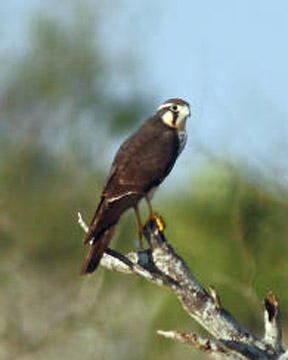
Region 2 of the US Fish & Wildlife Service covers much of the southwest: Oklahoma, Texas, New Mexico, and Arizona, The region’s Laguna Atascosa National Wildlife Refuge, in southernmost Texas, is one of the special NWRs in the region. Sheltered by South Padre Island, the refuge (est. 1946) property consists of more than 97,000 acres on the western shore of Laguna Madre; it’s a unique convergence of temperate, subtropical, coastal, and Chihuahuan desert habitats. The municipalities of Rio Hondo and Harlingen lie to the west. And as of the September 2012 statistics, 86.1% of those acres (77,309 of 89,787 acres) were secured by purchase with MBCF funds.
Water salinities range from salt (a 5,000-acre impoundment) to brackish to freshwater, including several resacas (oxbow lakes from previous channels of the Rio Grande). That water supports multitudinous waterfowl, and each November, upwards of a quarter million ducks of various species can depend on the refuge. The refuge lies in the Central Flyway, and it is a key stopover point for migrants. Chief among the migrating waterfowl is the Redhead. Estimates count 80% of the North American population of this species wintering at Laguna Atascosa.
And the bird life isn’t all waterfowl. The refuge’s checklist records 410 species. The impressive Aplomado Falcon is making a comeback in The Lower Rio Grande Valley, centered at Laguna Atascosa and thanks to a creative reintroduction program, a partnership with the Peregrine Fund, and cooperation with local ranchers. Multiple pairs of this species are now breeding on and immediately off the refuge.
November is also a great time to observe moths and butterflies at the refuge. Checklists enumerate 130 species. Of particular note is the Blue Metalmark (Lasaia sulai); its U.S. range consists only of south Texas.
On dry land, the refuge’s treasured habitat is its thorn scrub forests, dense entanglements of trees and shrubs found on the lomas, silty clay dunes that rise to heights of 10 meters. These impenetrable brushlands of coyotillo, lantana, and cenizo are especially important to the Ocelot, a small spotted wild cat with a distribution from the U.S. to Argentina. Once ranging throughout Texas and neighboring states, the Lower 48 population of the albescens subspecies of Ocelot is now reduced to about 50 individuals in Texas, and many of them call Laguna Atascosa home.
Among their various management activities and plans, refuge staff is planning to add underpasses so that these charismatic cats can safely traverse refuge roads. And the staff is working with neighboring refuges to create migration corridors for wildlife of all stripes and spots.
Jan Dauphin has assembled an extensive photo tour of Laguna Atascosa NWR. The refuge’s friends group invites you to adopt an Ocelot. And Richard Moore has created a fine 30-minute documentary film about the Ocelot’s past and future in south Texas.
The total picture at Laguna Atascosa NWR illustrates how MBCF acquisition dollars can be followed by great projects.
This National Wildlife Refuge profile first appeared in the 12 November 2014 issue of Wingtips.